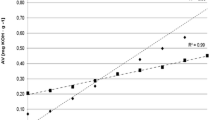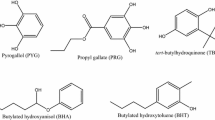Abstract
The degree of physical and chemical deterioration of biodiesel produced from rapeseed and used frying oil was studied under different storage conditions. These produced drastic effects when the fuel was exposed to daylight and air. However, there were no significant differences between undistilled biodiesel made from fresh rapeseed oil and used frying oil. The viscosity and neutralization numbers rose during storage owing to the formation of dimers and polymers and to hydrolytic cleavage of methyl esters into fatty acids. However, even for samples studied under different storage conditions for over 150 d the specified limits for viscosity and neutralization numbers had not been reached. In European biodiesel specifications there will be a mandatory limit for oxidative stability, because it may be a crucial parameter for injection pump performance. The value for the induction period of the distilled product was very low. The induction period values for the undistilled samples decreased very rapidly during storage, especially with exposure to light and air.
Similar content being viewed by others
References
Mittelbach, M., M. Wörgetter, J. Pernkopf, and H. Junek, Preparation and Use of Rape Oil Methyl Ester, Energy Agric. 2:369–384 (1983).
Biodiesel: Development Status World-Wide, Report of the Austrian Biofuels Institute, Vienna, Austria, 1997, pp. 1–30.
Mittelbach, M., Specifications and Quality Control of Biodiesel, Bioresource Technol. 56:7–11 (1996).
Du Plessis, L.M., J.B.M. De Villiers, and W.H. van der Walt, Stability Studies on Methyl and Ethyl Fatty Acid Esters of Sunflower Oil, J. Am. Oil Chem. Soc. 62:748–752 (1985).
Bondioli, P., A. Gasparoli, A. Lanzani, E. Fedeli, S. Veronese, and M. Sala, Storage Stability of Biodiese, Ibid. 72:699–702 (1995).
Thompson, J.C., C.L. Peterson, D.L. Reece, and S.M. Beck, Two-Year Storage Study with Methyl and Ethyl Esters of Rapeseed, Trans. ASAE 41:931–939 (1998).
Prankl, H., and H. Schindlbauer, Oxidation Stability of Fatty Acid Methyl Esters, Tenth European Conference on Biomass for Energy and Industry, 8–11 June 1998, Würzburg, Germany.
Simkovsky, N.M., and A. Ecker, Effect of Antioxidants on the Oxidative Stability of Rapeseed Oil Methyl Esters, Erdöl, Erdgas, Kohle 115:317–318 (1999).
Mittelbach, M., and H. Enzelsberger, Transesterification of Heated Rapeseed Oil for Extending Diesel Fuel, J. Am. Oil Chem. Soc. 76:545–550 (1999).
Deutsche Norm DIN E 51606, Dieselkraftstoff aus Fettsäuremethylester (FAME), 9, 1997.
DGF Einheitsmethoden. Peroxidzahl C-VI 6a (84): Wissenschaftliche Verlagsgesellschaft mbH Stuttgart (1994).
American Oil Chemists' Society, Fatty Acid Composition by Gas Chromatography, Official Methods and Recommended Practices of the American Oil Chemists' Society, Champaign, 1989, Method Ce 1-62.
HBS 2000-306, Determination of Oxidation Stability of Straight Mineral Oil (1994). British Standards Institution, London, United Kingdom.
Author information
Authors and Affiliations
Corresponding author
About this article
Cite this article
Mittelbach, M., Gangl, S. Long storage stability of biodiesel made from rapeseed and used frying oil. J Amer Oil Chem Soc 78, 573–577 (2001). https://doi.org/10.1007/s11746-001-0306-z
Received:
Accepted:
Issue Date:
DOI: https://doi.org/10.1007/s11746-001-0306-z




